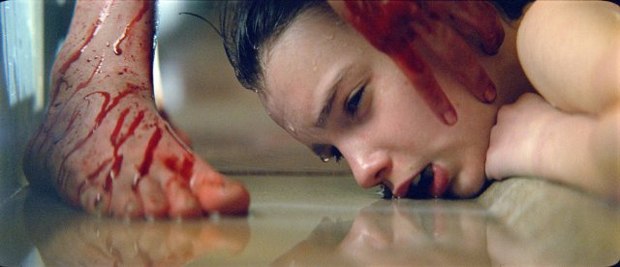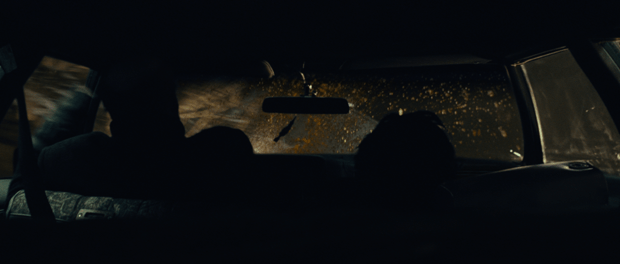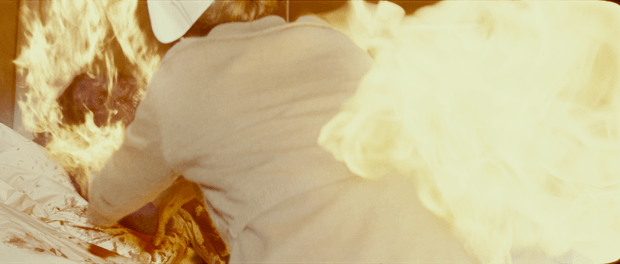Matt Reeves fills us in on the vfx challenges of Let Me In and thoughts on Superman.
Check out the Let Me In trailer and clips at AWNtv!
After the epic-size, monster mash, Cloverfield, Matt Reeves goes small and intimate and even scarier with Let Me In (opening today from Overture Films), a re-envisioning of Let the Right One In, the Swedish vampire cult film. Only it's transplanted to cold and drab New Mexico circa 1983 (evoking Reagan and AIDS, among other things). The director spoke to us this morning from New York about vfx and the Superman rumors circling the internet.
Bill Desowitz: So, how's your day been like so far?
Matt Reeves: I don't know how it's going to do, but there were two great things that happened this morning: I read A.O. Scott's [enthusiastic] review in The New York Times and then I checked my email and there was an email from John Lindqvist, who wrote the Swedish novel and the screenplay for [Tomas] Alfredson's film, and he and I had been in touch since the beginning and he had never seen the movie. He just saw the movie and wrote me an incredibly kind email. I'm excited that people are responding emotionally to it and Lindqvist responding emotionally to it meant the world to me. The way he's using this story as a metaphor for the horror of adolescence is the reason for me why it has such power.
BD: What did you think of Scott's allusion to E.T.?
MR: I actually did think a lot about E.T. because in the book he talks about the suburb where he grew up in Sweden in Blacksburg and it made me think of Spielbergia in E.T. And to be honest, that's one of the reasons I was attracted to [Spielberg's] films growing up. They were amazing fantasies but I related to the kids. In fact, that was the part of what I wanted to do here with this coming of age story: I was bullied, my parents went through a difficult divorce and just the idea of being at that age and going through that experience does feel horrific at times.
BD: Let's get into your vision for vfx and some of the key moments.
MR: The attempt was to find as naturalistic as possible a representation of everything. Like the car [chase] was very important to me. I really wanted that to be a visceral sequence in a kind of Hitchcockian point of view suspense wise.
[SPOILER ALERT]
I wanted to put you in [Richard] Jenkins' shoes and the agony of that moment. I wanted you to be rooting for him to get away from those boys. You start thinking you're going to see another gruesome murder, and then you have this suspense that builds with someone else getting in the car and realizing he's outnumbered. And as he's driving off, I wanted to stay [inside the car] with Jenkins and that you would feel the horror of it.
And so when I brought that idea to Brad [Parker, the visual effects supervisor], he brought to me a bunch of YouTube videos of people actually recording themselves in the car flipping. And there was one, in particular, and he had one of those security cams on the dash and you're watching him as he begins nodding off. And you can see the horizon out the windows start to turn a little bit and he wakes up and literally in an instant, because the camera's mounted on the dash and completely locked off, you see him defy gravity and spin around and in an instant he's up on the roof. And it is so visceral and it turned out that the guy was OK, and I said to Brad let's do that: I don't want anything to prepare you for that moment, which is startling.
BD: What about the animation?
MR: The animation was a real challenge. What I wanted was for things to be moving as seamlessly out of Chloë [Grace Moretz] footage as much as possible. And I wanted it to be shot in angles that had some distance so that it would have an uncanny kind of side to it. And so most of the shots where she goes up the tree are her, and then we go to a transition and the idea was to give her the ability to do things that a person can't do.
BD: What was your approach to the bedridden vampire victim?
MR: Originally, I envisioned that as a single shot, kind of like the car sequence, and that would've involved CG on a level that was beyond our price range. We were a low-budget movie and this was a launching for the new independent Hammer company, and we didn't have a lot of resources. Fortunately, I had Brad, who is brilliant. And so we had to do it with real fire, which, on the one hand, I really, really like, but it limits you. There, unlike the car scene, I was forced to cut. So then it became cutting it into pieces and we used some real fire and supplemented with a cyber scan of the actress, so that we could have her skin literally decay in the light. And our thought was that she should almost be like a hot dog and her skin would start to split from the inside. And I think Method did a great job in creating something horrific [in CG] given our limited resources.
BD: What about the challenge of doing the jungle gym scene indoors?
MR: Really, we have about 200 visual effects shots and I'm hoping you don't recognize [a lot of them]. And the jungle gym scene was a part of that too. I wanted to do something intimate with their performances and I didn't feel that being out in the bitter cold was going to be the best way to get [that]. Some of it we shot within the actual cold and once you establish the world, then the idea is that you already know what it looks like and if you can give a faithful enough reproduction of it, then you won't question it again. What we ended up building in a very unique way was essentially a large photo drop of it and then cut up pieces of it and made it two-dimensional, and then actually affixed the same kind of source lights that are on the actual set.
[SPOILER ALERT]
BD: What are we to make of the ending?
MR: There's no question that they're in love, but there's the "now what?" And I thought that was very chilling. To me, it's like the end of The Graduate. There's some speculation about an epilog that Lindqvist was planning -- I don't know if this is true because we haven't discussed the ending -- how she bites him so they can be together for eternity. And the only thing I'll say about that is that it sounds amazing and also equally dark because being a vampire in his world is not a good thing, either.
BD: Superman?
MR: Well, I think it's an amazing story and can be incredibly interesting to do. It's not true that I have actually had any meetings with Chris Nolan. And I know that people are looking at the movie over at Warner Bros., but I don't know if it has anything to do with that. It was flattering and cool to be on that list, and I have tremendous respect for Chris Nolan.
BD: But Superman is very different from Batman. What is your take on Superman?
MR: I think it speaks to an American optimism, but he's also an outsider and a freak of sorts, and, I don't know, there's something great in the myth. I'm drawn to it. To me, that's what this story was. Lindqvist created a great vampire myth that was about something else, and I think the only thing that would interest me in a personal involvement on that project was to me finding the subtext that had some resonance, and there's no question that that film is going to be a real challenge, but I think with those smart people involved there's a chance they'll do something very interesting with it.
Bill Desowitz is senior editor of AWN & VFXWorld.











